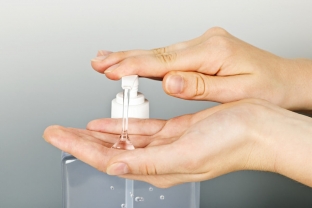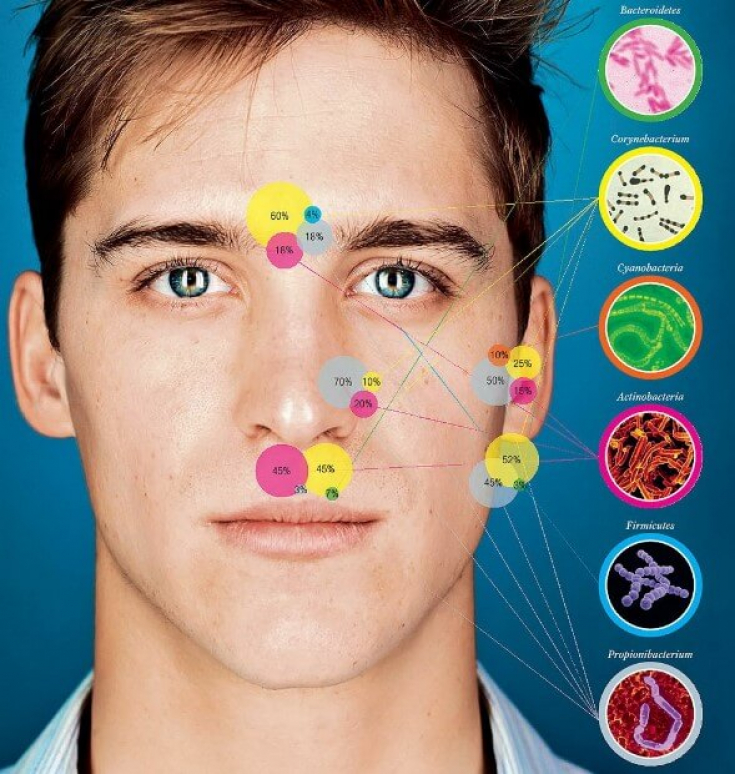Every day more and more invasive procedures are performed in cosmetology clinics and salons, the range of operations in plastic surgery is expanding. The first place in such operations is the issue of patient safety, which cannot be discussed without careful observance of asepsis and antiseptics, i.e. measures aimed at preventing the penetration of infectious agents into the body and their destruction in the body through various methods of exposure and substances.
About the principles of competent disinfection in cosmetology estet-portal.com will tell in this article.
- Asepsis and antisepsis in medicine: history of development
- Detergents used for disinfection in cosmetology
- Peculiarities of using povidone-iodine for disinfection in cosmetology
- Why is skin disinfection before aesthetic procedures so important
- Skin preparation for injection
procedures Asepsis and antisepsis in medicine: history of development
Thanks to the introduction of aseptic and antiseptic measures at the end of the XIX – At the beginning of the 20th century, the possibilities of surgeons expanded significantly.
Read also:Metabolism: replacing obesity with slimness Doctors thought about disinfection 500 years before our era. True, at that time it consisted solely in cleaning wounds from foreign bodies in order to accelerate wound healing.
During the empirical period of asepsis and antisepsis, Hippocrates used only boiled water during operations.
Disinfection in medicine has evolved from simple wound cleaning to a complex of antiseptic and aseptic measures.

During the period of Dolisterian antiseptics, the Hungarian obstetrician Ignaz Semmelweis proposed the use of bleach for hand treatment. Nikolai Ivanovich Pirogov used the following agents as antiseptics:
silver nitrate;
- chlorine bleach;
- wine spirit;
- zinc sulfate;
- camphor alcohol.
- Also, Pirogov, in order to prevent surgical infections, demanded the separation of patients into infectious and non-infectious, as well as their placement in different departments.
Facebook! Louis Pasteur in 1878 announced the danger of infection of patients due to microbes entering the wound from the hands and instruments of the surgeon, after which, already in the 60s of the XIX century, J. Lister used carbolic acid as an antiseptic for open fractures.
After 25 years, asepsis has proven itself so well that it was even proposed to abandon antiseptics in surgical practice. But it turned out to be impossible.
Further discoveries in the field of chemistry have allowed the selection of new
antiseptic agentsthat are less toxic to patients than carbolic acid. Similar tools began to be used to process surgical instruments and other items. Thus, over time, asepsis was closely intertwined with antisepsis. Means used for disinfection in cosmetology
The relevance of disinfection in cosmetology today has increased significantly due to the emergence of various
minimally invasive manipulationsaimed at rejuvenating and improving the condition of the patient's skin. Properly selected antiseptics can not only prevent secondary infection, but also speed up skin recovery. Such agents include povidone-iodine, which has been used in medicine since the end of the 20th century and has antiseptic and disinfectant properties. The antimicrobial action of povidone-iodine is based on damage to the cell wall of pathogens by iodine.
Povidone-iodine antimicrobial spectrum:
gram-negative microorganisms;
- gram-positive microorganisms;
- fungi and spore-forming flora;
- protozoa;
- treponemes;
- some viruses.
- The advantage of this drug is the absence of formation of resistance of microorganisms even with
Features of the use of povidone-iodine for disinfection in cosmetology Patients with
diabetesare prone to pyoderma, trophic ulcers in the development of diabetic foot. Prevention and treatment of this pathology can avoid limb amputation in such patients. Povidone-iodine is also effective in pathology complicated by the addition of a secondary infection or trophic disorders and in the prevention of infection.
Povidone-iodine solution is used both in concentrated and diluted form.
In case of acne or pustular diseases, it is recommended to wipe the skin with a swab dipped in a concentrated or 5% (1:2) solution.contouringInfectious complications in cosmetology have become more frequent as a result of the use of thread technologies and cannulas for
. The cause of such complications is the result of the penetration of bacteria from the surface of the skin into the dermis and subcutaneous fat. Therefore, it is very, very important to follow the rules of disinfection in cosmetology. In this case, concentrated povidone-iodine is used on healthy areas of the skin, exposure time – 1–2 min
When correcting involutional changes in the anogenital region, povidone-iodine is used in concentrations recommended for "small" gynecological operations.
Read also:Not a sweet life: how excess glucose worsens skin condition
1% (1:10) solution of povidone-iodine is used in the complex therapy of bacterial or fungal dermatitis. For local treatment or after viral infections, the skin is treated with a concentrated solution of povidone-iodine.
Thus, povidone-iodine is a reliable antiseptic, and its effectiveness has been confirmed by a number of studies. The possibility of using a concentrated and diluted solution for disinfection in cosmetology is also a big plus, which maintains the relevance of the use of povidone-iodine
by cosmetologists.
Why is skin disinfection before aesthetic procedures so important The injection of foreign materials such as dermal fillers is the placement of an implant that will remain in place for some time. As such, they are associated with a risk of infection.
The risk of side effects and infection has been reported to be associated with bacteria such as
Staphylococcus epidermidisand
Propionibacterium acneand is increased with high density gel administration.
It has been reported that only a few microorganisms are sufficient to contaminate a medical device during insertion through the mucous membrane or skin. This may lead to bacterial colonization of the implanted hydrogels.
:
large needle diameter;
increase injection depth from 1 to 3 mm;- using linear and microbolus techniques.
- Read the most interesting articles in
Telegram! To improve the efficiency of skin preparation, longer disinfection times, multiple skin treatment steps, and proper injection technique are recommended.
Skin preparation for injection procedures
Patient preparationbefore skin disinfection should not be overlooked.
Firstly, the patient must have hair collected and
hands washed and treated with alcoholin case they accidentally touch the skin. Before the procedure, all cosmetics are removed, as substances in any product can interfere with the activity of antiseptics.
There are various types of antiseptics that can be used for injection procedures.
1. Isopropyl alcohol 70%
Alcohol is a fast-acting, broad-spectrum antimicrobial antiseptic. It causes protein and DNA damage in Gram-positive and Gram-negative bacteria, including multidrug-resistant bacteria, including methicillin-resistant Staphylococcus aureus (MRSA) and vancomycin-resistant enterococcus (VRE), Mycobacterium tuberculosis and fungi.

Painless beauty: modern methods of anesthesia for aesthetic procedures
Products based on chlorhexidine bigluconate (0.5-1%) have a broad spectrum of activity, excellent efficacy and long-lasting effect (48 hours). The combination of the quick and immediate action of alcohol and the constant activity of chlorhexidine or iodine is optimal for skin disinfection.
3. Sodium hypochloriteSodium hypochlorite is an effective antiseptic. His introduction to hand hygiene in the 19th century by the Hungarian physician Dr. Ignace Semmelweis led to a dramatic reduction in morbidity and mortality.
Sodium hypochlorite is used effectively and safely in large industrial settings and in the home.
Read also:Estrogens on the alert: female sex hormones against aging
4. Hypochlorous acidHypochlorous acid is non-cytotoxic, has a broad spectrum of action (bactericidal, fungicidal, virucidal, sporicidal preparation), has a neutral pH, and also has anti-biofilm activity.
The selected antisepticmust be:
quick acting;
broad spectrum;- For more invasive procedures, inhibit the growth of microorganisms during and for some time after the procedure.
- Subscribe to our YouTube







Add a comment